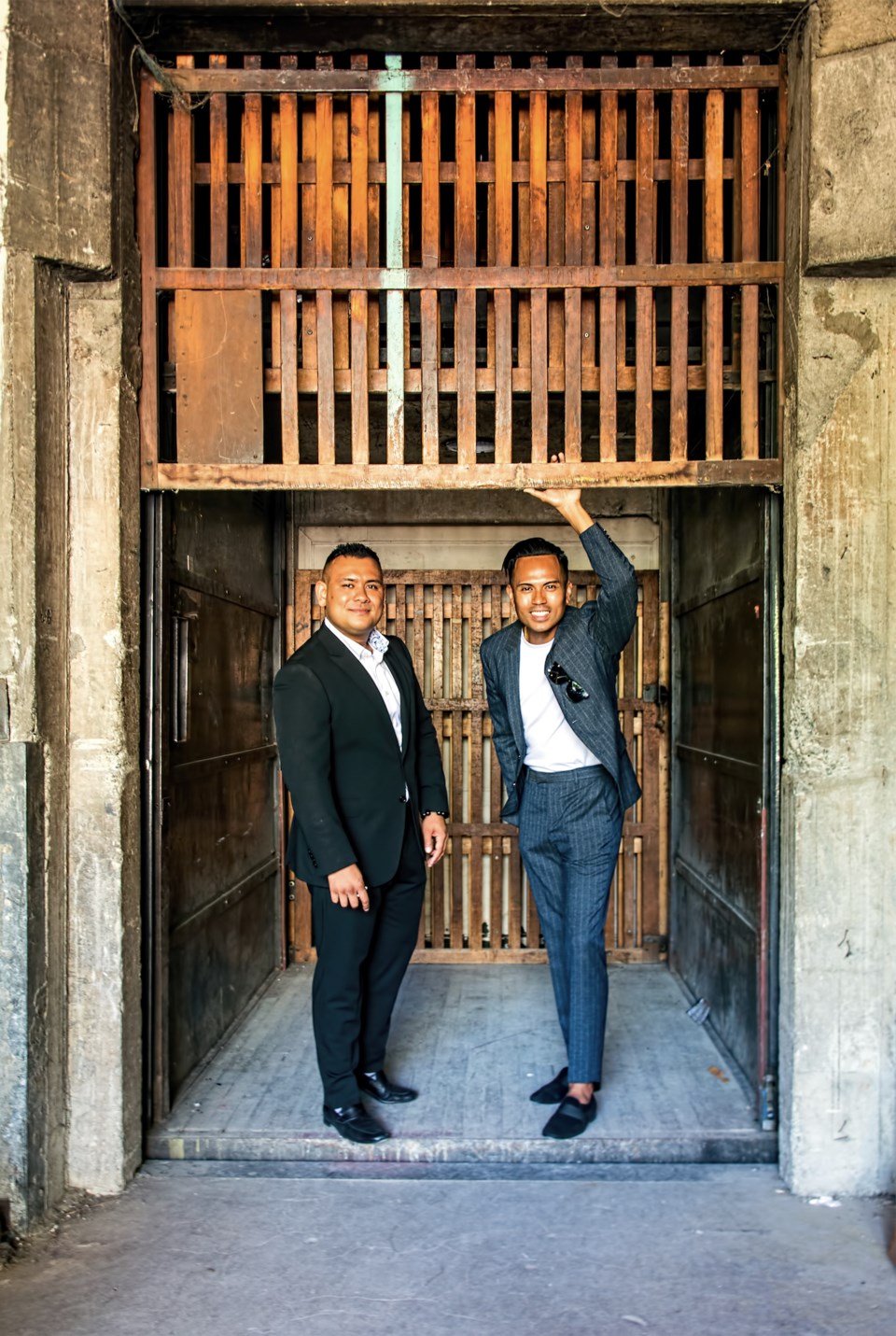In the past two years realtors Marc Saul and partner Robert Tham have sold more than $25 million worth of real estate in a zone where even Vancouver police can be afraid to get out of their cars.
The two partners at real estate agency Corbel Commercial seldom use the term ‘Downtown Eastside’, explaining the name is linked to what the area has become, not the vibrant distinct neighbourhoods of the past or the vision they and their clients have of its future.
They prefer Japantown, Strathcona, Gastown, Crosstown and Railtown – all historic areas that were founded by entrepreneurs, immigrants and others seeking a better life – said Tham, who has been specializing in the area for 18 years and remembers visiting the Woodward’s department store on Hastings Street as a child.
“It is the worse down here now than it has ever been,” Tham said, noting that, since COVID began, the area, already rough, appears to be have been abandoned by the city and the police.
Police, he said, apparently turn a blind eye to a drug market and property crime that would not be tolerated anywhere else. “The police often don’t even get out of their cars,” he said.
Yet real estate buyers continue to flood into the area, which has all the bones of a property resurgence: it is framed by waterfront and the downtown and, at Strathcona, hard on the border of the False Creek Flats, where the Emily Carr University of Art and Design is already built and the $1.9 billion St. Paul’s Hospital starts construction this year.
“It is safe here, for capital,” Tham said, though he said a number of buyers have a philanthropic rather than a financial incentive.
An example is the 26-room Shamrock Hotel, at 635 East Hastings, which Vancouver business executive Angena Kalhar bought in January for $3.5 million, a price nearly half-a-million dollars above its assessed value. Built in 1912, it has been renovated into a single-room-occupancy and is fully rented to local workers and artists.
The purchase, Kalhar explained, is not an investment but part of the philanthropic work that her family is known for.
Kalhar, president of KTL Transport Inc., has donated the Shamrock’s downstairs floor to the Union Gospel Mission to run their services for women and children until the Mission’s new premises are constructed in a year or so. When the Mission no longer needs the space, it will continue to serve the local residents, who Kalhar described as among the most vulnerable in the city.
“Purchasing this building is an opportunity for us to give back to the community,” she said.
Tham added that he was approached by a retired Japanese-Canadian businessman seeking to buy a Japantown building simply to reclaim parts of its history.
While activists in the Downtown Eastside often protest gentrification, Tham sees the purchase and improvement of property as a means of making the area safer and more secure for everyone.
But, he added, city zoning rules stifle new business or higher density.
In the city’s Downtown Eastside Oppenheimer Park (DEOD) area, where the Shamrock is located and Japantown once thrived, any new housing development is restricted by height, and requirements that one-fifth of any new apartment building must be social housing.
As well, he said, the city discourages new businesses from starting up in the area.
The city has turned down applications for new barber shops, boutique retailers and even art galleries in the DEOD, Saul said, with city officials claiming they required a change of use that can take up nine to 18 months to approve.
“It seems the city is trying to deter new businesses,” Saul said “But store owners keep the street clean in front of their building, and bring life and hope to the area.”
“There are hardly any construction cranes in the DEOD,” Tham noted.
Rigid city development rules, however, are a boon to investors in single-room-occupancy buildings and other commercial property, Tham noted, because of a lack of any new competition.
The real estate values reflect that. The two-storey Abrams Block in Gastown, said to one of Vancouver’s first commercial buildings, sold last October for $10.8 million, or nearly $1,000 per square foot. In April, Corbel also sold 52 Powell Street, a 110-year old, 10,284-square-foot office building, for $8.1 million.
It is common for refurbished single-room occupancy buildings in the area to generate capitalization rates in excess of 4 per cent, which is higher than most conventional Vancouver rental apartment buildings, Tham said.
Tham and Saul recently listed 41 West Pender Street in the Crosstown area, which currently houses an old warehouse on its 6,000-square-foot lot. Rare in the area, it has a development permit in place for a six-storey, mixed-use building with commercial space and 16 units of market residential rentals. The floor-space-ratio allows 40,000 square feet of new building.
At an asking price of $14.2 million, the per-square-foot buildable value is not much different than real estate prices on the upscale west side of Vancouver.
While Tham and Saul said a number of their buyers are seeking character buildings, some with an altruistic intent, they agree investors are not blind to the future potential in Vancouver’s oldest community.
“At the end of the day, our buyers are looking for return,” Tham said.
And, he suggests that, like the pioneers who founded and built the original core of Vancouver, today’s investors hope to forge a brighter future from the broken Downtown Eastside.



